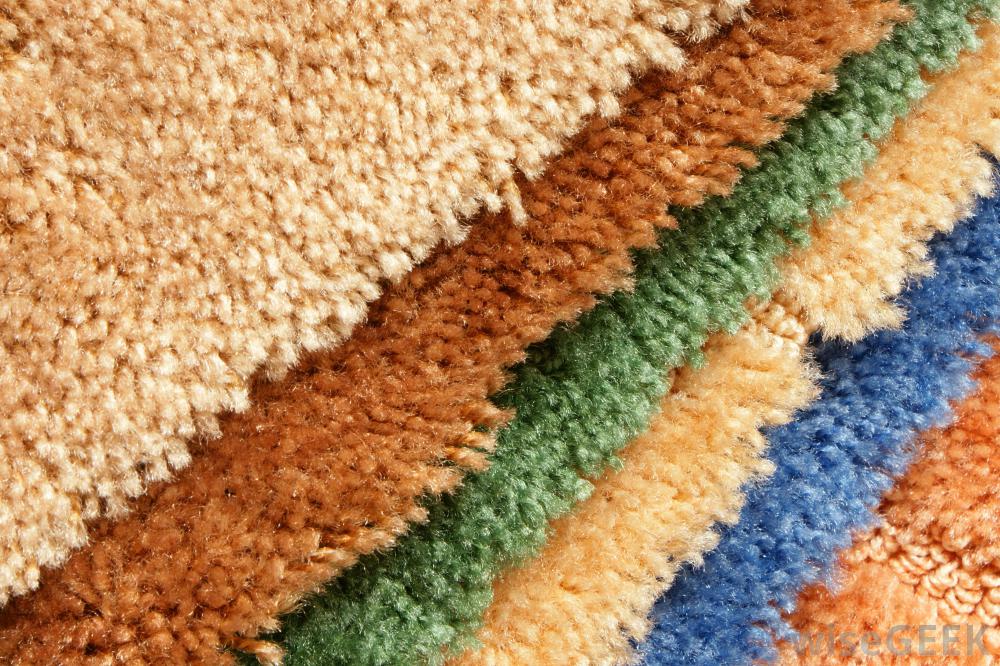Nylon - By far, the most popular of the man made fibers.

The Pros
- Excellent Strength
- Good Elasticity (Nylon will stretch up to 33% of its length and still regain its original shape. This is very important in heavy traffic areas where furniture may be dragged across the carpet.)
- Abrasion Resistant
- Static Resistant
- Good Resiliency
- Non Absorbent
- Responds well to cleaning
- Inexpensive to manufacture
Cons
- Bleaching/Fading
Polyester - Its popularity has gone up and down like a roller coaster. Because it is relatively inexpensive to produce, manufacturers are regularly reintroducing this fiber to the carpet industry. Although it has some excellent qualities, and is a great fiber for clothing, it does have some limiting factors when used in carpet.

With the advent of microfibers, polyester has become increasingly popular as an upholstery fabric.
Pros
- Resists bleaching/fading
- Heat Resistant
- Stain Resistant
- Environmental Friendly
- Low Absorbency
Cons
- Dye Resistant
- Does not resist oil stains
- Crimp Loss (This occurs gradually from continuous stretching of the fiber due to foot traffic, furniture moving and agitation of some degree. Some fiber simply don’t spring back as well as others. This is most common with polyester fiber, no manufacturer has been able to totally resolve the problem.)
Olefin - A very versatile carpet fiber. It is also the generic name for polypropylene, a synthetic fiber used to make many different products, including carpet. In our carpet industry, the terms olefin and polypropylene are typically used interchangeably, as they both mean the same thing. You may hear the fiber referred to by either name.

Pros
- Moisture Resistant
- Chemical Resistant
- Fade Resistant
- Lightweight
- Inexpensive
- Strong
Cons
- Not Resilent
- Heat Sensitive
- Affinity for Oil
- Wicking (the upward motion of water and cleaning solution during drying from the base of a tuft to its tip carrying with it any remaining soil and contamination, which is then deposited on the tips of the tuft.)

Acrylic - This is not widely used in carpet today. It can be found blended with wool and in some products that imitate the look and feel of wool. It is also found in some inexpensive area rugs. It has many of the properties of wool and is often seen blended to reduce the price of a carpet while maintaining its appearance.

Pros
- Wool Like Properties (Soft, lightweight, dull appearance that helps hide soil.)
- Strong, Light weight
- Cleans good and Stain Release
Cons
- Resistance
- Poor Resiliency (This leads to nap reversal, pooling, and to permanent furniture marks. Nap reversal or pooling is the tendency of the nap to lie in opposite directions along an irregular line
- Browning (Sensitive to alkaline chemicals, which can lead to a form of browning.)
I'll be happy to answer any questions you have, provide you with an estimated price over the phone, or come into your home/office and give you a free written estimate--without cost or obligation of any kind.
I hope you found this information about the other types of carpet very helpful and informative.
If you have any questions or comments, please call me at 1 800 848-8385
I've dedicated my business to consumer education and service. I'll be pleased to help you in every way. I look forward to your call.
And remember, we clean your carpet, not your wallet!
